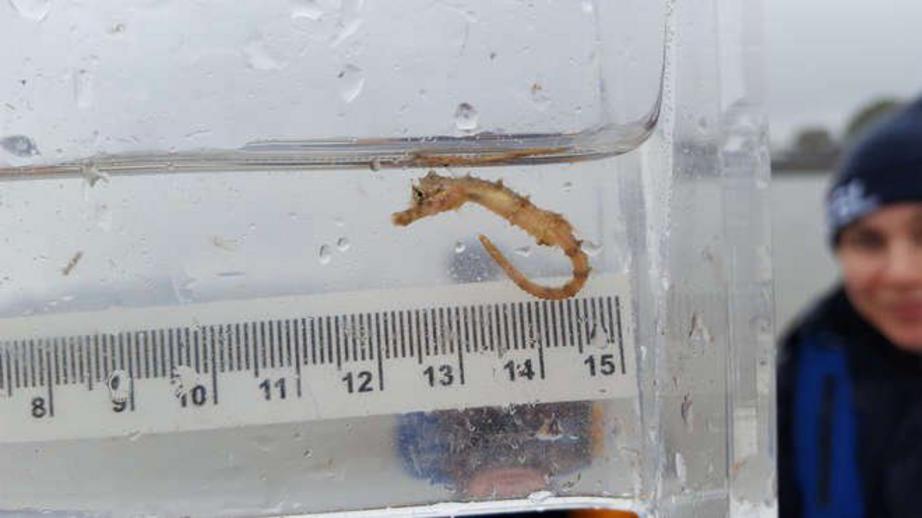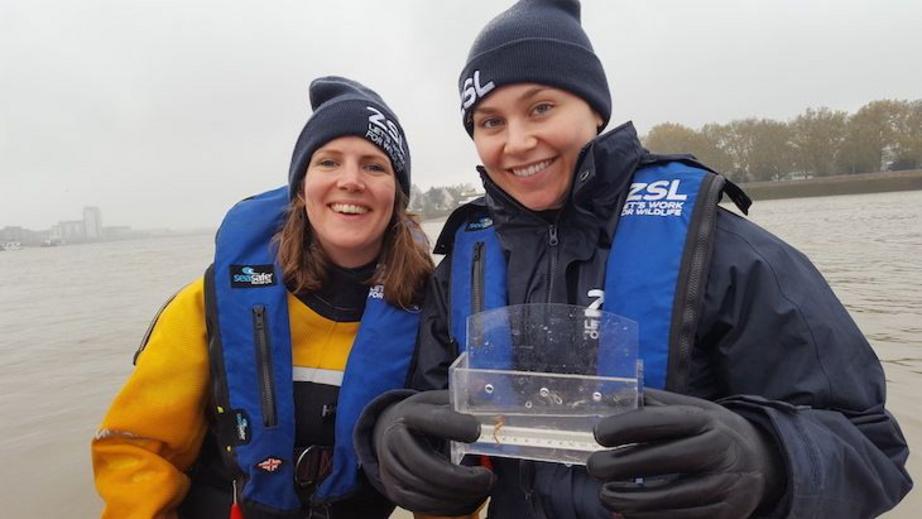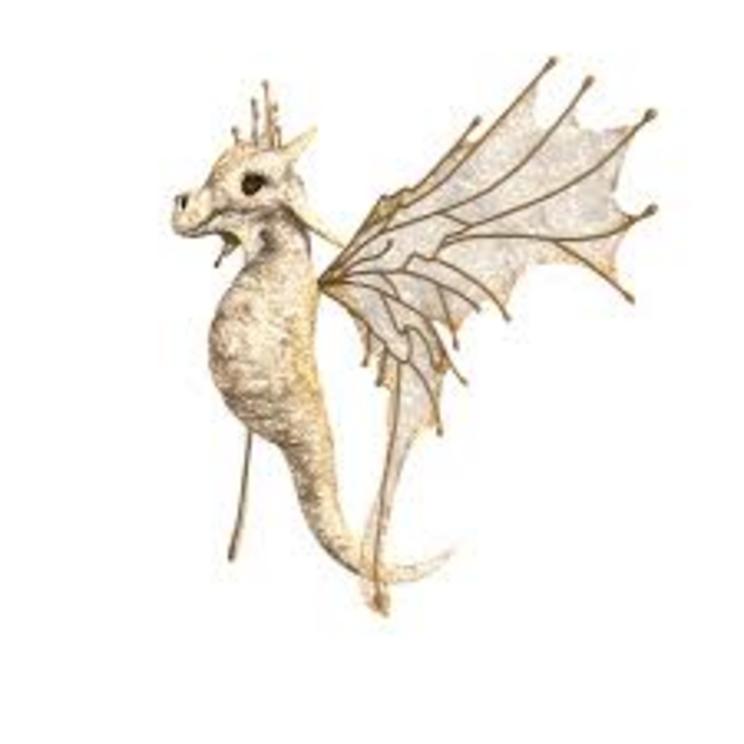Rare seahorses discovered in the River Thames
It's a sign that the iconic waterway is getting cleaner by the year.
Things you’d expect to find in the River Thames: tires, bicycles, shoe soles, plastic bags, message-stuffed bottles, elusive cryptids and the occasional ancient artifact. And maybe an eel or two.
Things you might not expect to find in the River Thames but, nevertheless, thrive there: harbor seals, dolphins, porpoises, otters and over 125 species of fish including pike, perch, bream, sole, smelt, houndsharks, wild salmon and seahorses. Yes, seahorses.
Declared as “biologically dead” in the late 1950s, pollution levels in the famed English river — the section that snakes through London is technically a tideway — have improved dramatically in recent decades. Never mind its murky appearance and malodorous past — the Thames is one of the world's great environmental success stories. Sure, it’s not pristine enough to swim in (or at least yet) but the erstwhile “Dirty Old River” can now claim bragging rights as the cleanest watercourse to flow through a major city. Thanks to aggressive clean-up efforts, strict regulations on industrial dumping and major improvements to London’s Victorian sewage system, the Thames is getting cleaner and cleaner by the year.
The slow but steady return of long-absent aquatic life is the most obvious testament to the Thames' impressive rebound. Yet the proliferation of seahorses isn't just surprising — seahorses in London, who would have thought? — but perhaps the most encouraging sign yet that the formerly foul tidal estuary is truly on the mend.

In recent months, a surge of short-snouted seahorses have been reported in London's tidal Thames. The small, equine-shaped fish were granted legal protection after their initial discovery in 2008. (Photo: Anna Cucknell/ZSL)
A rare breed indeed
Normally found taking up residence in shallow and sheltered tropical waters, seahorses have been previously observed on a somewhat sporadic basis in the Thames Estuary.
In 2008, the hush-hush discovery of two rare seahorse species — the short-snouted seahorse (Hippocampus hippocampus) and the spiny seahorse (Hippocampus guttulatus) — lead to the legal protection of these monogamous marine animals under the Wildlife and Countryside Act. The rarer of the two species, the short-snouted seahorse, is usually found in the warm waters of the Mediterranean Sea around Italy and in the Canary Islands, a Spanish archipelago off the coast of Morocco.
Alison Shaw, manager of the London Zoo’s marine and freshwater conservation program, said at the time: “These amazing creatures have been found in the Thames on a number of occasions in the last 18 months during our wildlife monitoring work. It demonstrates that the Thames is becoming a sustainable biodiverse habitat for aquatic life. Now they are protected, conservationists are more relaxed about telling the world they are there.”
Nearly 10 years later, researchers with the Zoological Society of London (ZSL) are confident that seahorses aren't just visiting the Thames on a seasonal basis but thriving as permanent residents within the confines of the British capital city.

In addition to seahorses, the once-filthy Thames is home to a surprisingly robust amount of aquatic life. Seals, porpoises, otters and a wide variety of fish and seabirds all call the urban tidal estuary home. (Photo: Anna Cucknell/ZSL)
'Sticklers for clean water'
As NOVA reports, seahorses, described as “sticklers for clean water,” have been spotted in the Thames on six separate occasions over the past two months near central London's South Bank and in Greenwich, a borough in southeast London. This is a sizable increase in frequency compared to past sightings and serves as further proof of the Thames’ improved water quality.
ZSL conservation manager Anna Cucknell explains to The Times that both short-snouted and spiny seahorses tend not to travel far, leading her to believe that they’re sticking around for the long-haul. “Contrary to what a lot of Londoners might think, the Thames has actually been a pretty healthy and thriving ecosystem for several decades now,” she says. “However, there are still several pollution problems facing the river from misconnected pipes and isolated pollution events.”
While encouraging, Cucknell says that it’s unclear why sightings have surged in recent months although improved reporting systems might have something to do with it.
" ... there’s currently a real lack of scientific data on the wider status and populations of these two seahorse species in the Thames and throughout their range, so we’re hopeful these recent finds will attract the attention of funders to help us understand more about these amazing animals," elaborates Cucknell in a news release.
As for the "several pollution problems facing the river" mentioned by Cucknell, there is a notable solution in the works in the form of the Thames Tideway, a 16-mile-long sewage tunnel currently under construction beneath the Thames. Expected to be completed by 2023, the 4-billion pound tunnel will significantly minimize the discharge of raw sewage and polluted stormwater into the river during combined sewer overflow (CSO) events, which occur during periods of heavy rain. Once the mega-project is complete, 34 highly polluting CSO discharge points located along the Thames will instead flow directly into the tunnel where wastewater will be stored before being conveyed to a sewage treatment plant at which point it will be cleaned and released back into the Thames.
For the rest of this article please go to source link below.
Video can be accessed at source link below.

